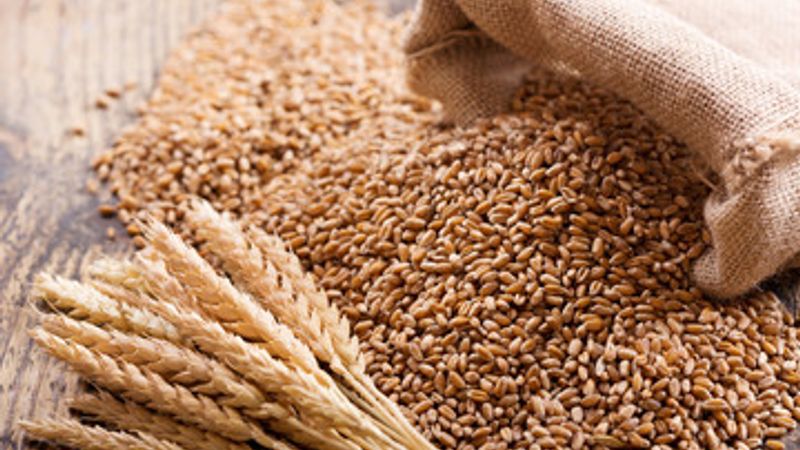

Our Review Process
Our articles undergo extensive medical review by board-certified practitioners to confirm that all factual inferences with respect to medical conditions, symptoms, treatments, and protocols are legitimate, canonical, and adhere to current guidelines and the latest discoveries. Read more.
Our Editorial Team
Shifa Fatima, MSc.
Author
Dr. Apoorva T, MHM.
MEDICAL ADVISOR
Wheat For Diabetes - Nutrition Profile & Benefits
Wheat is a staple grain widely consumed worldwide. Its high demand makes it the world’s third most-produced crop. There has been an increase in the demand for wheat products– from traditional food items to western products; wheat is routinely consumed worldwide.
There are different wheat species grown worldwide. The most commonly grown is Triticum aestivum. While some varieties are adapted for the hot and dry Mediterranean, some kinds of wheat that grow in colder climates are ideal for making kinds of pasta.
If thoughts like “Is wheat chapati good for diabetes?” have come to your mind, you are not alone. Also know about pp blood sugar
Table of Contents
Nutrition Profile
Carbohydrates : Carbohydrates are the primary source of body energy, and wheat contains a sufficient amount of this nutrient.
Protein : Proteins make up nearly 8% to 15% of the dry wheat weight. Consuming wheat will ensure you get sufficient protein for your body to function.
Minerals : Wheat contains lots of minerals, and its concentration varies depending upon the type of wheat, soil conditions, and agricultural practices. Eating wheat every day can give you nearly 70% of your daily recommended intake of minerals. Minerals in wheat flour are calcium, magnesium, phosphorous, selenium, manganese, phosphorous, copper, and potassium.
Antioxidants : Antioxidants are substances that protect cells and tissues from oxidative damage, which leads to diseases. Wheat is packed with antioxidants like lutein and zeaxanthin, lowering your risk of cataracts and age-related macular degeneration. These antioxidants are found in the wheat kernel, and so, they are present in the whole wheat powder.
Fibre : Whole grains like wheat contain high fibre, which is beneficial to our health for the following reasons:
- It helps lower blood sugar and cholesterol levels
- Reduces blood pressure levels
- Lowers your risk for colorectal cancer
- Boosts digestion and improves bowel movements
- Have high satiety value, keeping you full for long
- Enables weight loss as you tend to consume lesser calories
Wheat is preferred over rice due to its low glycemic index of 30. Foods with a low glycemic index cause blood sugar levels to rise slowly. This makes it easy to lose weight, manage blood glucose levels better and achieve better recovery after exercise. Read more to know about diet for diabetes.
What are the Benefits of Wheat?
Wheat is an excellent source of carbohydrates, vitamins and minerals, making it beneficial for our health. These benefits of wheat include:
- Provides energy: Whole wheat carbohydrate content and vitamin B make it a potion for energy.
- Helps control obesity: Regular consumption of whole wheat is known to cause weight loss and is a good option for persons with obesity.
- Boosts digestion and prevents metabolic disorders: Whole wheat reduces cholesterol levels and blood pressure and improves digestion. Consuming wheat may help prevent metabolic diseases. Also read about how to prevent diabetes
- Reduces chronic inflammation: Wheat contains betaine, a substance known to prevent chronic inflammation in rheumatic diseases. The anti-inflammatory property of wheat also helps reduce the risk of heart diseases, type 2 diabetes and osteoporosis.
- Improves metabolism: The high fibre content in wheat improves metabolism, reducing insulin resistance.
- Good for women: Consuming wheat increases energy levels in women and boosts their vitality. Studies show that wheat consumption prevents weight gain and type 2 diabetes in women and keeps their BMI low.
- Aids in weight loss: Wheat is rich in fibre like any other whole grain. The high fibre content in wheat helps you lose weight, increases the satiety value of food, and reduces your caloric intake. Know about is honey good for diabetes?.
Benefits of Wheat for Persons in Diabetes
Wheat is one of the first alternatives for persons with diabetes if they are told to abort rice. If you are thinking about how wheat and diabetes are linked, here are some benefits of wheat for people with diabetes:
- It is rich in fibre that helps reduce cholesterol levels. This reduces the risk of diabetic cardiovascular complications.
- It has a high satiety value that keeps you feeling full for long, reducing your caloric intake.
- The high fibre in wheat slows down digestion and subsequently glucose absorption, keeping blood sugar levels from rising rapidly.
- A low to medium glycemic index (GI) ensures a slow rise in blood sugar levels after a meal.
- Despite keeping blood sugar levels within the normal range, wheat consumption provides your body with the required amount of energy.
- It helps in weight loss and prevents obesity, reducing your risk for developing diabetes-related complications. Also know about post prandial blood sugar

How Does Wheat Affect Blood Sugar Management?
Wheat is effective for blood sugar management in persons with diabetes for multiple reasons:
- Wheat has a low glycemic index; it prevents sugar spikes after eating meals.
- Being rich in fibre, wheat lowers blood sugar, blood cholesterol and blood pressure levels and helps lose weight – all of which help reduce blood sugar levels.
- Minerals and proteins in wheat enable the proper functioning of enzymes that reduce insulin resistance and improve blood sugar levels.
Different Ways to Consume Wheat for Diabetes
Persons with diabetes can easily include wheat in their daily diet. A few simple yet tasty ideas include:
- 2-3 chapatis or parathas with a protein-rich curry or vegetable during lunch and dinner.
- Paneer besan chilla is the perfect mix of nutrients for persons with diabetes. Enhance the nutrient value of this snack by using rice bran or olive oil.
- Add some wheat flour to your multigrain flour to up the vitamin and mineral content of your chapati.
- Whip up some wheat pancakes with eggs, milk and honey for a tasty, healthy breakfast.
Conclusion
Consuming adequate but portioned amounts of whole wheat during the day is more beneficial. If you have diabetes and are wondering, “Is wheat good for diabetes?” Whether wheat consumption is healthy or not, consult with your doctor. Persons with diabetes must exercise regularly and take their medications while eating a healthy diet to keep their blood sugar levels within the normal range. Also know can diabetes be reversed.
FAQ
What is the Glycemic Score of wheat?
Wheat has a very low glycemic index of 54, making it a great whole grain for persons with diabetes.
What are the Disadvantages of eating Wheat for Diabetics?
While whole wheat is beneficial for persons with diabetes, when it is mixed with refined flour, the GI score of the mixture increases, spelling trouble as it increases postprandial blood sugar levels significantly. People with diabetes and celiac disease must opt for gluten-free grains and flours.
Disclaimer
This website's content is provided only for educational reasons and is not meant to be a replacement for professional medical advice. Due to individual differences, the reader should contact their physician to decide whether the material is applicable to their case.








